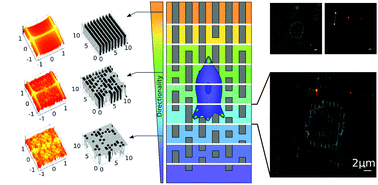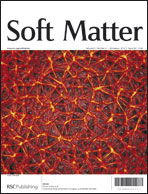All cells are exposed to extra-cellular physical stimuli determined by the details of the micro-/nano-environment within which they exist. These stimuli are present in organs and tissues where specific directional signals coexist with biotopographical noise (e.g. cellular debris, residues of apoptotic cells, protein accumulation, sclerotic plaques). Here, we present a platform for the investigation of the impact of this noise based on nanostructured plastic scaffolds with a controlled level of anisotropy. Two different types of topographical noise are introduced into fully ordered nanostructures. Starting from nanogratings, we randomly introduce nanomodifications, whose density determines the overall substrate directionality. A general quantitative definition of directionality is discussed and applied to our nanostructures. Substrate biocompatibility is assayed by culturing PC12 cells and evaluating cell viability and NGF-induced neuronal-differentiation efficiency. The suitability for high-resolution microscopy on living cells is demonstrated by visualizing focal adhesion complexes by total internal reflection fluorescence (TIRF) microscopy. Finally, we show the impact of noise in modulating focal adhesion maturation in PC12 cells upon NGF-induced neuronal differentiation. Our results indicate design rules both for biocompatible textured substrates allowing the study of cell–environment interaction in vitro and for tissue engineering applications.

You have access to this article
 Please wait while we load your content...
Something went wrong. Try again?
Please wait while we load your content...
Something went wrong. Try again?


 Please wait while we load your content...
Please wait while we load your content...